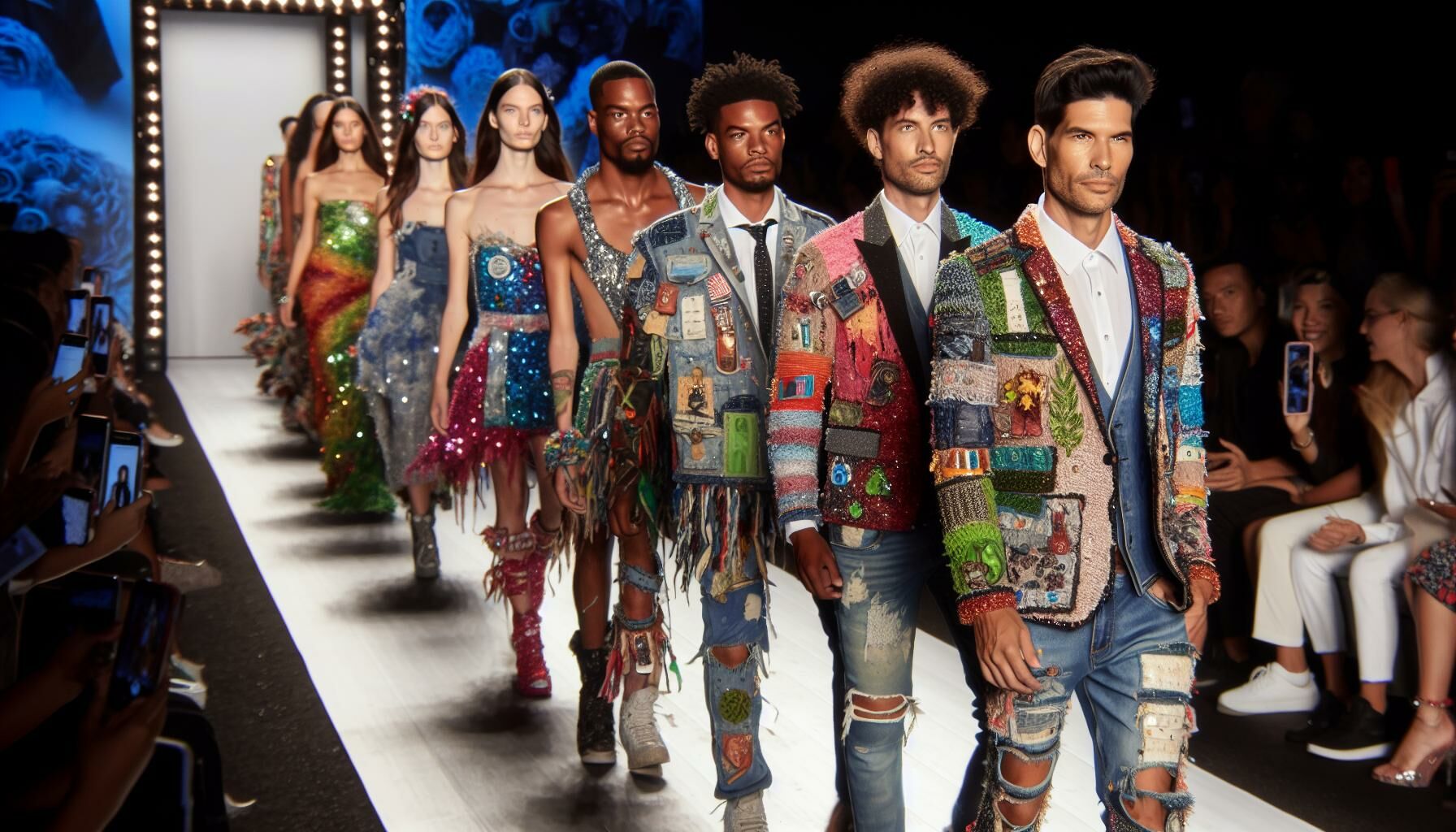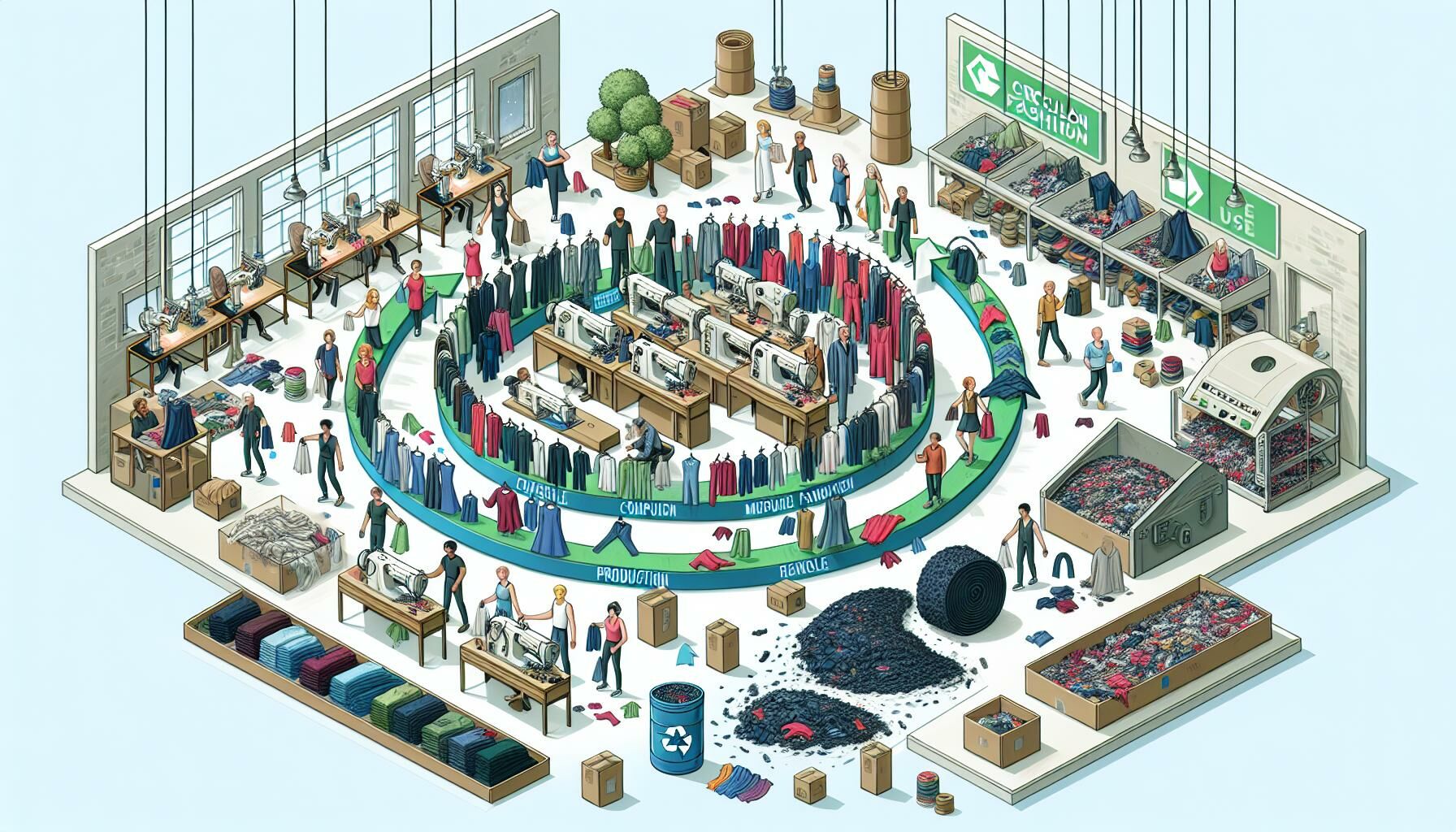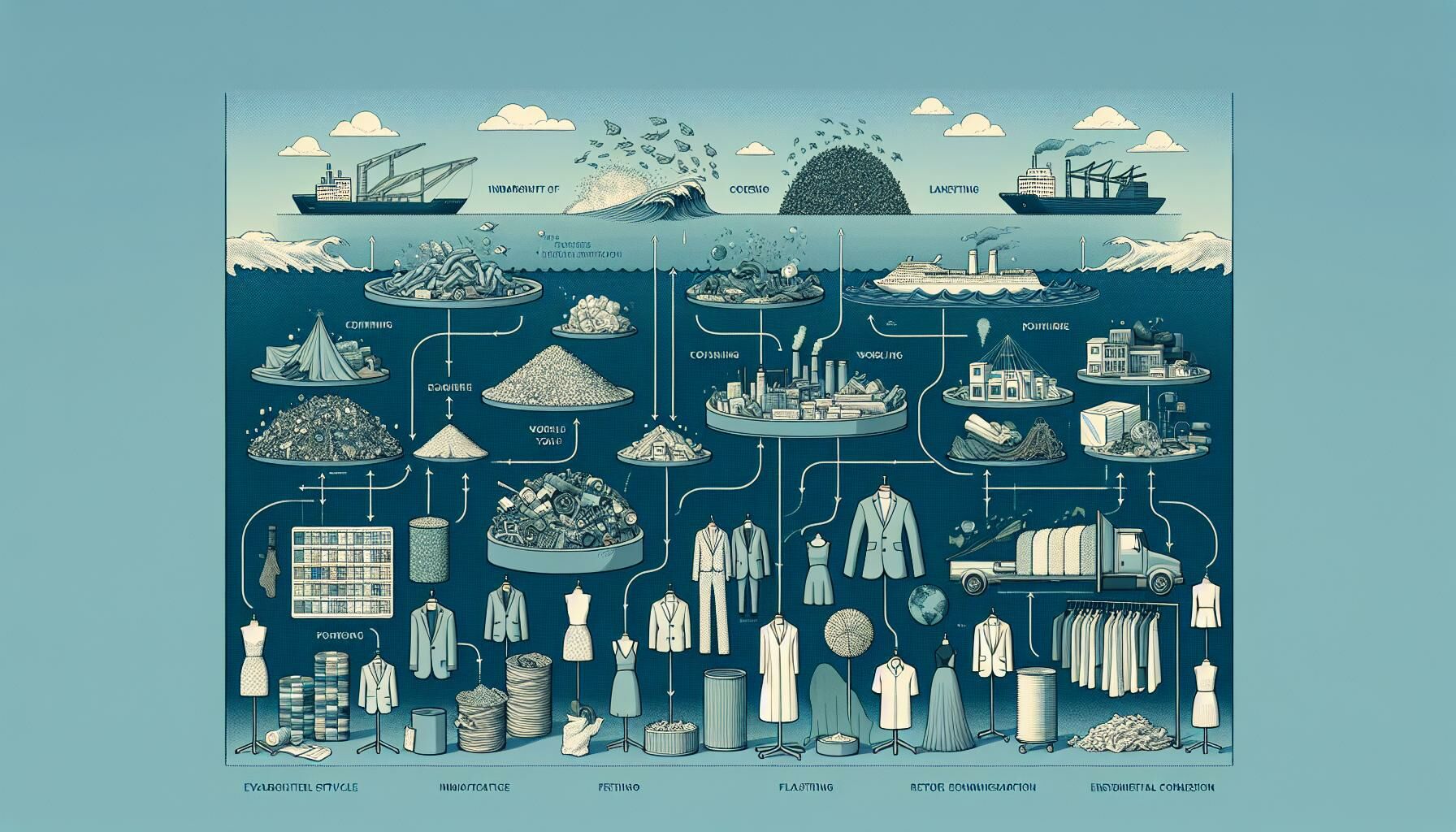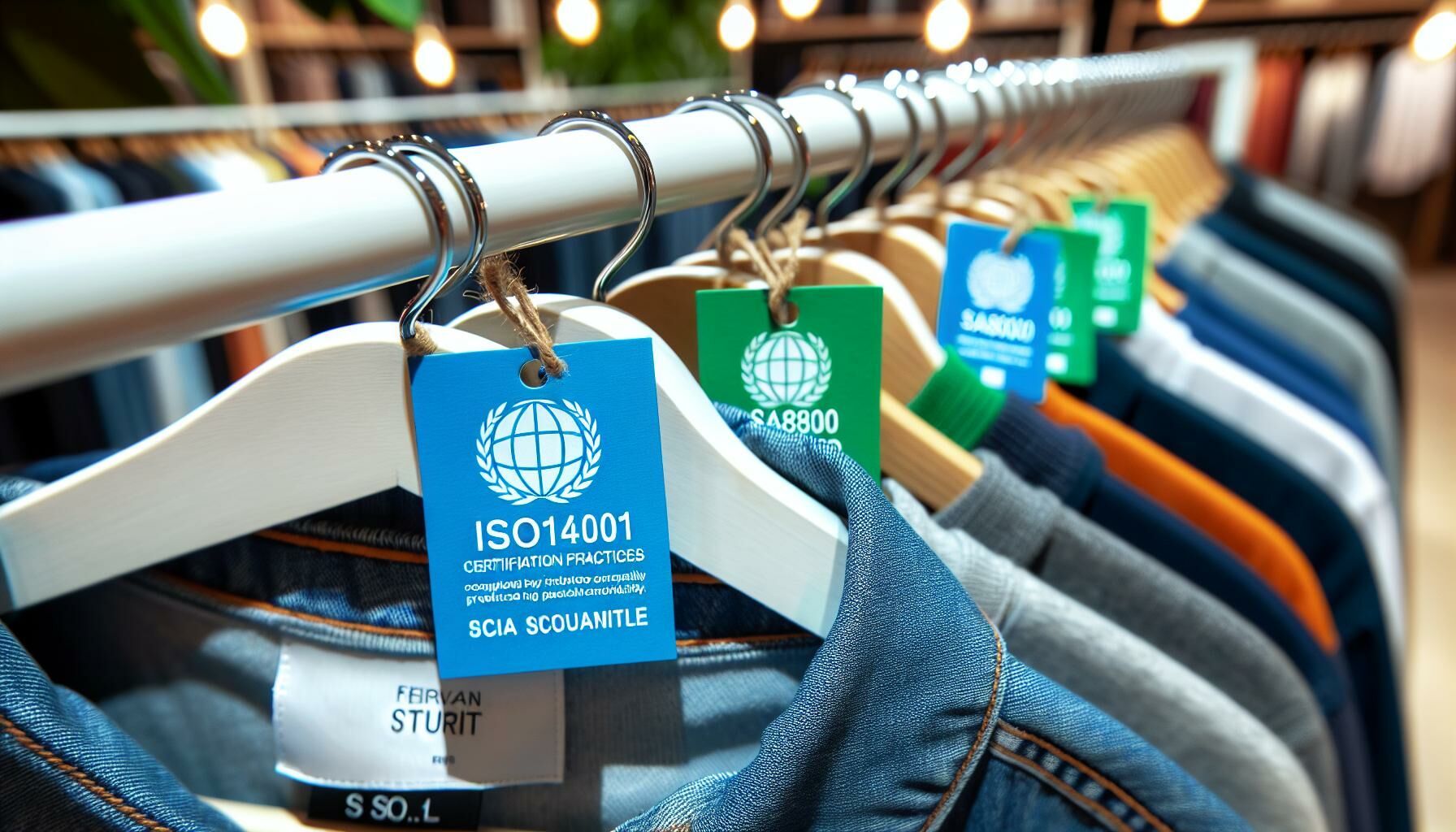The impact of recycling fashion in 2024

Fashion enthusiasts are now choosing to recycle their wardrobes where they mix old-school vibes with the latest trends. The satisfaction comes from the creativity of piecing old and new clothing together which also contributes to the health of the environment. Bringing back recycled fashion hits two birds with one stone – we get to be trendsetters and do our bit for Mother Earth.
The buzz around recycled fashion is getting louder, showing that more people are waking up to how their wardrobe choices can make or break the environment. Choosing recycled threads means we’re all about saving resources, cutting down waste, and saying “no thanks” to the pollution that comes with making brand-new clothes.
It also hurts our wallets less. Picking out recycled pieces or going to thrift stores means we’re slashing the demand for brand-new stuff while having a blast mixing and matching to refresh our look on the cheap. This shift towards greener habits helps push everyone to think twice before falling for fast fashion trends and choosing earth-friendly options instead.
It’s a clever move for keeping up with fashion trends without breaking the bank or harming the planet. As more people hop on this bandwagon, we’re paving the way for a future where being stylish doesn’t mean sacrificing Mother Earth’s health.
The rise of recycling fashion
The history and evolution of recycling in fashion
Back then, recycling was more about necessity – like passing down clothes or tweaking them at home to keep up with the times. Still, as time passed, designers started getting crafty with old fabrics and materials, kicking off this “upcycled fashion” vibe.
As we hit the 21st century, everyone started paying more attention to being kinder to our planet. Brands got on board by mixing recycled stuff into their lines, proving you can be stylish and eco-friendly at the same time. We’ve seen some awesome showcases on runways where outfits are made from recycled plastics, organic cotton – you name it. Designers like Erin Beatty designed a cool jacket from recycled and upcycled materials for the New York Fashion Week 2023.
Recycling now is not just some trendy alternative; it’s front and centre for tons of designers and brands trying to make fashion less of a villain to Mother Earth.
What is circular fashion?
Circular fashion is a system where clothes are designed, produced, and used in a way that maximises their lifespan and reduces waste to a minimum. It represents a transformative approach to fashion, where the end of a garment’s life signals the beginning of a new one.

This approach holds several key practices: making clothes last longer, choosing recycled materials over single-use, encouraging repair and maintenance to extend the garment’s life, and making sure we pass on or recycle clothes no longer in use.
This allows the fashion industry to operate more sustainably, encouraging innovation in fabric creation such as developing fibres that are easier to recycle or that degrade harmlessly. Brands in Thailand like Uniqlo adopt these principles. They have Uniqlo Sustainability where they encourage people to donate old clothes for them to reuse.
The importance of recycling in the fashion industry
Mitigating environmental impact
Recycling fashion helps us by keeping heaps of fabric out of the trash each year. Instead of always making new stuff and using all those resources – water, energy – for production, we reuse what we already have. This way, we save materials and clear all the pollution and greenhouse gases when making clothes. So when you think about it, it’s a major move in fighting against climate change.
Promoting sustainable consumer behaviour
Embracing recycling in fashion challenges fast fashion trends and disposable culture, making consumers reconsider their purchasing habits. Recycling encourages individuals to value quality over quantity, opting for durable pieces that stand the test of time. It highlights the importance of garment care, repair, and thoughtful disposal, extending the lifecycle of clothing. By supporting brands that prioritise recycled materials, consumers play an active role in pushing the entire fashion industry toward sustainability.
How recycling is changing the fabric of fashion
Unique and eco-friendly materials
This recycling revolution has challenged the way designers use materials. They now experiment with fabrics from recycled plastics and organic waste, showcasing innovation and commitment to sustainability.

Materials, such as recycled polyester derived from plastic bottles, are becoming staples in collections, reducing reliance on plastics and lowering environmental footprints. Companies get fabrics from unexpected places, including oceans and landfills, transforming waste into wearable art. This approach conserves resources and introduces unique textures and stories to fashion pieces, making each garment not just a statement of style, but also of environmental consciousness.
Upcycled clothing and zero-waste designs
Upcycling is like the secret sauce of eco-friendly fashion, shining a light on being creative and making the most of what we’ve got. This is when designers breathe new life into discarded clothing by turning it into something new and wearable, thus creating a zero-waste design. Fashion creators make sure to make use of every fabric scrap and give it purpose to the new design. This method not only reduces waste but also encourages a more thoughtful approach to consumption, urging consumers to value the craftsmanship and story behind each upcycled piece.
Fashion recycling in the future
Innovations in recycling materials
The fashion industry consistently seeks innovative solutions to its environmental challenges. Emerging technologies in textile recycling represent a transformative approach to material use. Innovations such as fibre-to-fibre recycling enable the breakdown of used garments into new, high-quality fibres, which significantly reduces waste, conserves resources and paves the way for a greener fashion industry.
Moreover, advancements in chemical recycling processes expand the range of materials that can be recycled, including those previously considered non-recyclable. Such processes contribute to the diversity of sustainable fabrics available to designers. This shift encourages brands to explore recycled and recyclable materials, fundamentally altering traditional manufacturing and design practices.
The impact of legislation on sustainable practices
Legislation is like a friendly guide helping the fashion industry become more eco-friendly. The EU for example has introduced this wonderful initiative called the Strategy for Sustainable and Circular Textiles. It sets clear guidelines for brands to be more considerate of our planet and its inhabitants. It’s essentially encouraging brands to step up their game by recycling more and choosing sourcing methods that are gentle on the earth. This approach is fantastic because it ensures brands are transparent about their origins and take accountability for their impact on the environment.
As legislation evolves, it ensures the fashion industry’s commitment to reducing its environmental footprint. It encourages investment in new technologies and processes that align with these sustainable objectives. The future of fashion recycling, influenced by innovation and regulatory frameworks, looks promising, setting a new standard for responsible fashion globally.
The consumer’s role in recycling fashion trends
Raising awareness and changing perceptions
The consumer holds significant power in driving the recycling of fashion trends. By raising awareness about the importance of recycling and sustainability in fashion, consumers can shift perceptions towards a more eco-conscious mindset.
We can start by engaging in and promoting discussions about circular fashion practices which encourages a departure from the fast fashion model. Sharing insights on social media, attending workshops, and participating in clothing swap events are practical ways to raise awareness. This active participation alters public perceptions, making recycling and sustainability key components of fashion consumption.
How to support and engage with sustainable fashion
Supporting sustainable fashion involves more than just purchasing from eco-friendly brands. Consumers can engage with sustainable fashion by educating themselves on the materials and processes behind it.

By checking for certifications like ISO14001 and SA8000, brands like Spectre show this to ensure they’re all about keeping things green and treating people right. Going for quality over quantity is a better option, plus rocking second-hand or vintage finds not only looks awesome but reduces waste too.
Have you ever heard of services that help you find the perfect fit using some smart AI tech from 3DLOOK? They’re game-changers in cutting down on those annoying returns that hurt our planet. And don’t forget, we’ve got power in numbers! Asking brands to be clear about how they roll and pushing for laws that make fashion more sustainable can shake things up. By doing these bits, we become a key player in moving towards cooler, greener fashion vibes.
Fashion is art. It takes a lot of creativity to piece different fabrics together to make them look good so that in return we do, and to create art while trying to conserve the earth is even better. But it’s not only fabrics that we can recycle. There are various ways we can create quality and functional art while saving the earth if you just look for it.
Latest Thailand News
Follow The Thaiger on Google News:


























